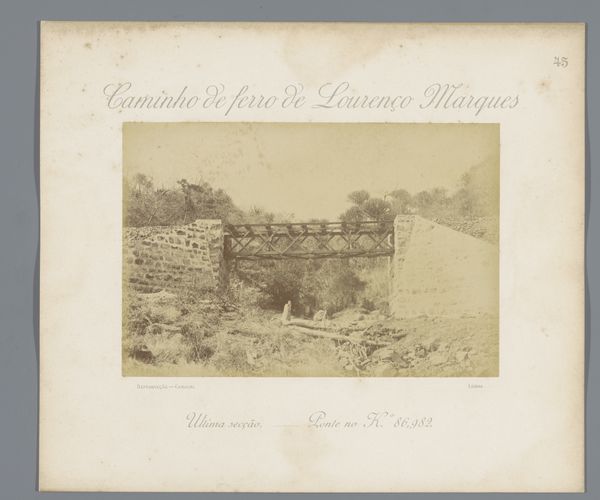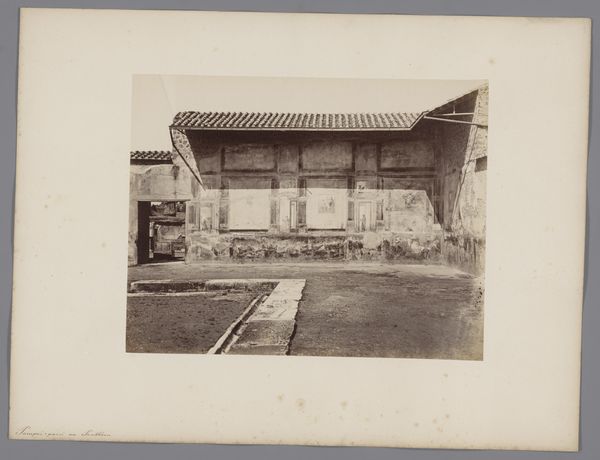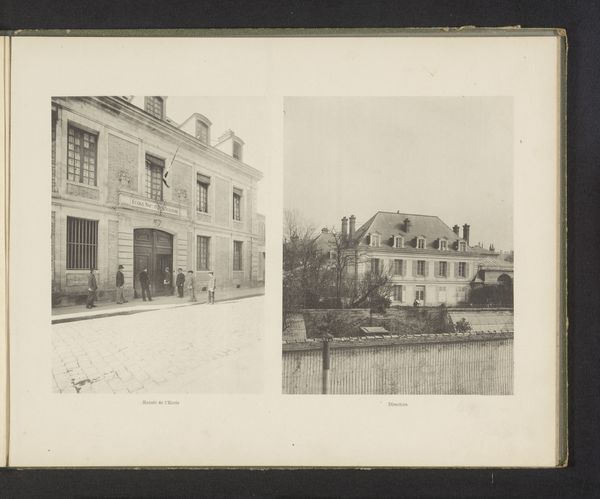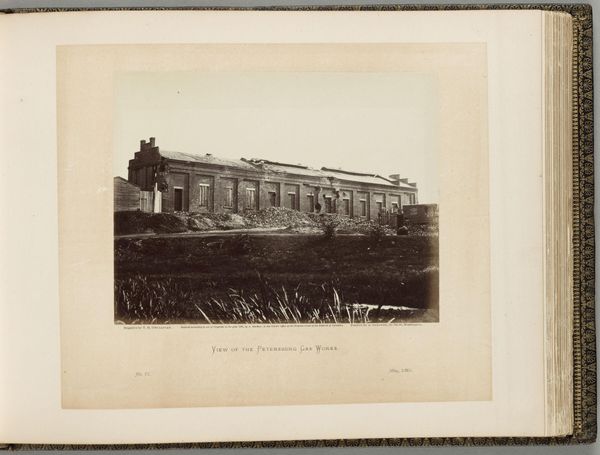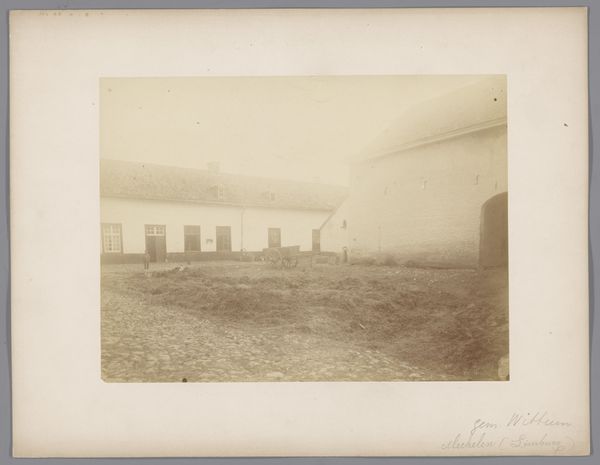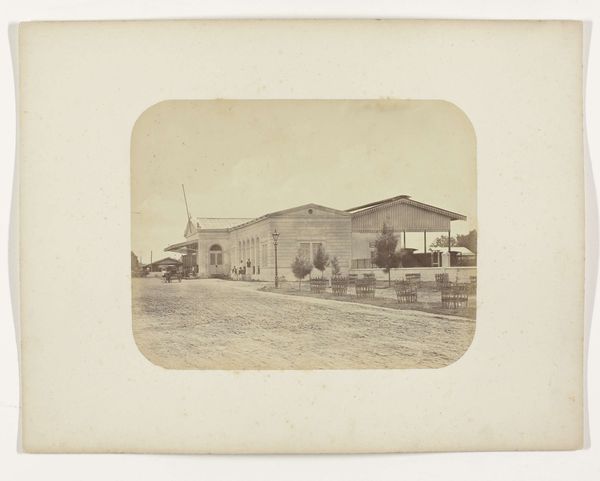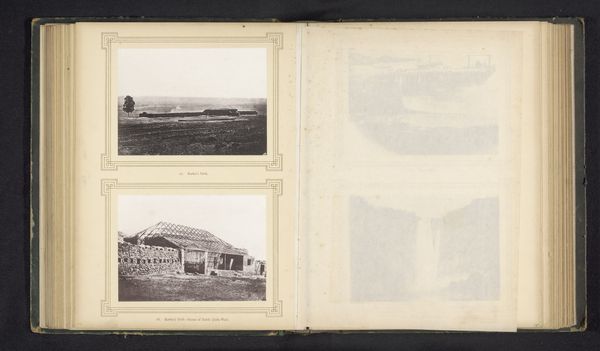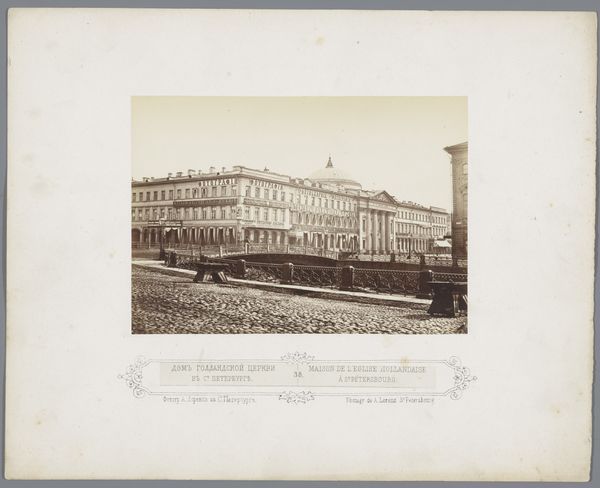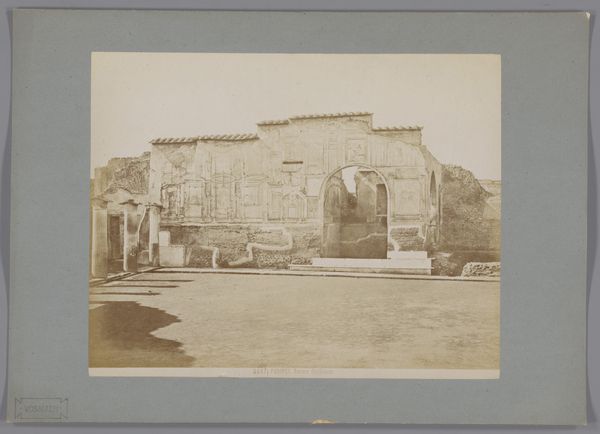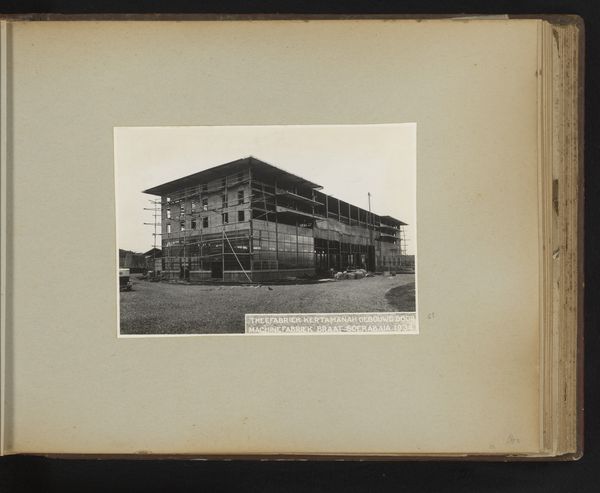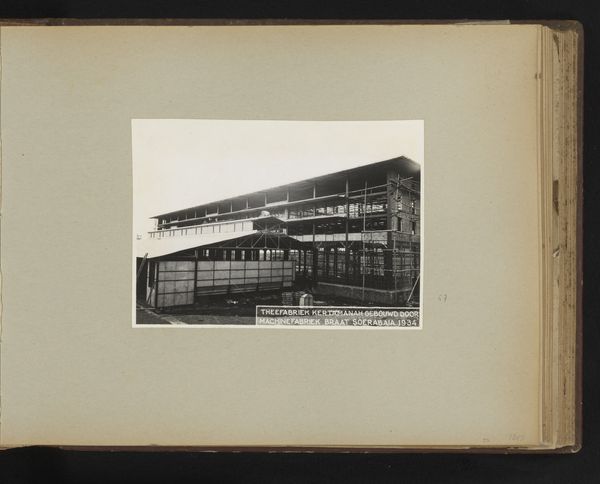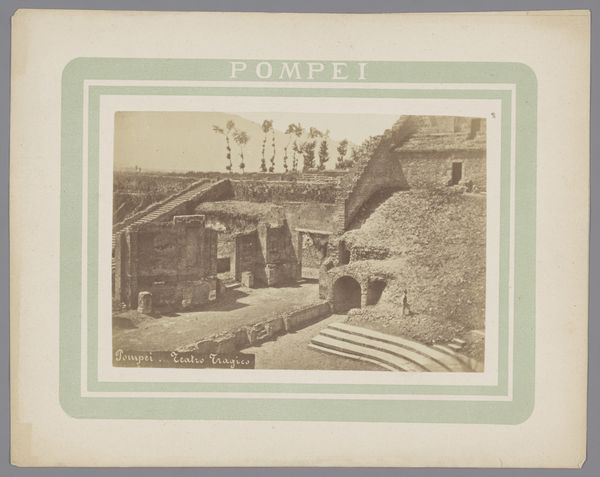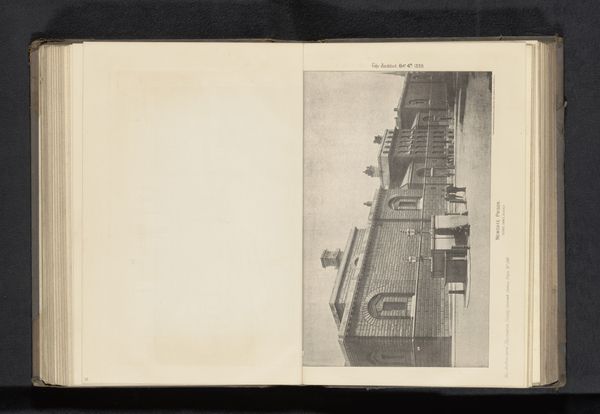
photography, site-specific, albumen-print
#
landscape
#
photography
#
orientalism
#
site-specific
#
albumen-print
#
realism
Dimensions: height 113 mm, width 165 mm
Copyright: Rijks Museum: Open Domain
Curator: What immediately strikes me is the photograph's muted palette and the somewhat dreamlike quality of the landscape. Editor: Yes, it’s strangely serene, considering what we’re looking at. This albumen print, taken circa 1886 by Manuel Romão Pereira, depicts the "Spoorbrug in aanbouw over de rivier Sucutuini in Mozambique," which translates to the railway bridge under construction over the Sucutuini River. The entire undertaking represents a very active engagement between Europe and what was perceived as the "Orient." Curator: Precisely! Notice how the stark geometry of the bridge, that repetitive structure cutting across the landscape, contrasts with the organic forms of the riverbank. There’s a clear visual tension there. Semiotically speaking, the bridge serves as a signifier of progress, or perhaps control, imposed onto the natural world. Editor: Control is the operative word here. Let's consider the sheer labour involved in building this bridge, particularly the source and living conditions of that labour. It was constructed with the forced labor of Mozambican peoples. You also have to account for the extraction of the materials – iron ore, stone, lumber – not only in its literal form, but for its economic consequences, resource depletion, and who benefits. Curator: The composition also reinforces a certain visual hierarchy. The bridge is central and dominant, while the river and vegetation seem almost secondary, relegated to the foreground and background. The light, as well, enhances the bridge’s presence, giving it a somewhat monumental quality. It speaks of rational construction imposed over raw and natural matter. Editor: Indeed. And, if you consider that it is an albumen print, made with egg whites as a binder, it ties the entire photograph, its construction and image, to the complex intersection between materials and production methods that fueled both art and colonial endeavors at the time. Curator: Well, examining these formal and structural elements really does deepen our appreciation, or at least understanding, of what we see here. Editor: And placing all that under construction into its proper material context helps to illuminate the complicated politics of progress at play.
Comments
No comments
Be the first to comment and join the conversation on the ultimate creative platform.
